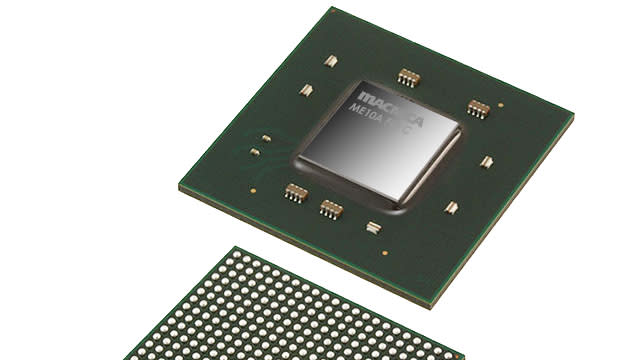Macnica Powers New ASTRODESIGN IPMX AV-over-IP Gateway

ASTRODESIGN and Macnica are teaming up for a new IPMX solution. Macnica’s ME10 SoC gives ASTRODESIGN a complete 1G AV-over-IP solution for low-latency transport of 4K60 4:4:4 video, along with a compact, low-profile design that perfectly fits within the IA-1568’s 1RU hardware design.
The relationship began a year ago, when ASTRODESIGN became an AIMS Alliance member to join forces with companies like Macnica to advance IPMX product development. That included developing a new IP Gateway for IPMX systems that would also help ASTRODESIGN expand into new business regions, including North America and Europe. Having worked together before, ASTRODESIGN quickly chose Macnica as its development partner for the IA-1568.
IPMX: What to Know

* IPMX Provides a Framework for Pro AV
* Do You Know the Difference Between IPMX and SMPTE ST 2110 (and AES67)?
* IPMX's Strength is its Interoperability
* IPMX: Media Experience Nirvana?
“Macnica’s ME10 solution provided our engineering team with the proven reference designs we needed to accelerate both product development and time to market while reducing our in-house engineering costs,” said Sean Yoshioka, sales general manager, international business division, ASTRODESIGN. “The ME10 also provides with a futureproof solution that allows us to add new features and functions to IA-1568 even after the product comes to market.”
The Macnica ME10 SoC transports HDMI 2.0 4K 4:4:4 video, audio and control data over 1Gb networks in a compact 23x23mm form factor. Ideal for use in larger production runs or within compact product designs, the ME10 supports key functions for IPMX interoperability (device discovery and registration, network resiliency, subframe latency and more) and provides a customizable API and web interface to all IPMX product developers.
Yoshioka anticipates pairing the IA-1568 IP Gateway with ASTRODESIGN’s 8K camera to move 4K video to monitors and display systems inside production studios and stadiums, though this represents just one of many potential use cases. He adds that the ME10’s compatibility with HDMI and its related features, including HDCP for digital content protection and EDID for display identification will be useful in bridging legacy systems and connections with IP networks.

